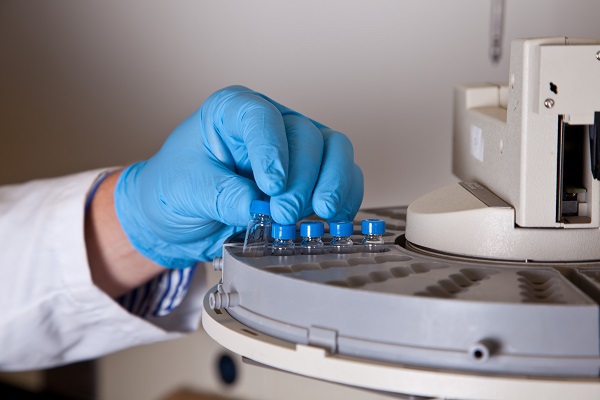Drug Testing: How It Works

In Oklahoma, both the state and private employers commonly use urine testing to check whether a person has used illegal drugs. Due to changes in legislation, many employers now mandate drug testing for their employees, leading to a large increase in the number of requested drug tests and likely an increase in the number of laboratories doing the testing.
How exactly do these laboratories check for drugs in urine? First, a sample must be collected from the test subject, usually in a small cup. Labs then conduct an automated immunoassay test on the sample. The simplest type of immunoassay test works by exposing the urine sample to a binding substance, such as a specific antibody. The antibody will bind to certain substances but not others, triggering a color change when it does bind. The test does not show how much of a substance is present, only that some of the substance is present. As a result, immunoassay tests cannot demonstrate whether someone is a long-time drug user.
The immunoassay test method often produces false positives. Other chemical compounds present in urine may react in the test in the same way that illegal drugs do, causing the test to read positive when in truth no drugs were present. For example, certain medicines, vitamin supplements, or foods trigger false positives on drug tests. Most home drug testing kits use the immunoassay method, so people testing at home should get samples checked at a laboratory to confirm results.
The immunoassay may be followed by a confirming gas chromatography-mass spectrometry (GC-MS) test. Laboratories use a separate portion of the sample for the GC-MS test, and check for the presence of any substances that were positive on the initial immunoassay. GC-MS tests can show the amount of a drug that is present in a sample. A series of GC-MS tests over time on the same subject can indicate whether drug levels are rising or falling and thus whether the subject is an ongoing user. Various factors such as the amount of drug used, time since the last use, and concentration of urine can affect interpretation of these results, however.
With an increase in workplace drug testing and prosecution of minor drug offenses, concerns about drug testing’s accuracy continue to grow. These concerns are shared by test takers and lawmakers alike. As described above, false positives are extremely common in immunoassay testing, perhaps resulting in accusations against people who have not taken drugs. On the flip side, drug test takers have been known to switch out urine samples or artificially dilute their urine to try to pass a test. As testing technology improves, we may see changes in the law or in testing procedures to allay these concerns.
Accused of a drug crime? Clint Patterson, Esq., of Patterson Law Firm, a former Tulsa prosecutor now using his trial experience and expert-level knowledge of drug and alcohol-testing science to defend Oklahomans, assesses his clients’ best options for defenses and sentencing. To schedule a case evaluation, visit Patterson Law Firm online or call Clint’s office at (918) 550-9175.

